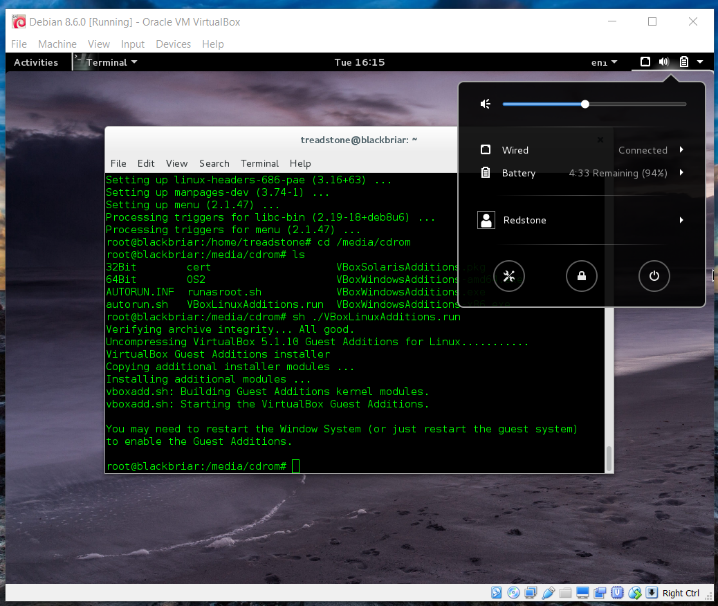

- #VIRTUALMACHINE FOR LINUX INSTALL#
- #VIRTUALMACHINE FOR LINUX PC#
- #VIRTUALMACHINE FOR LINUX DOWNLOAD#
- #VIRTUALMACHINE FOR LINUX FREE#
- #VIRTUALMACHINE FOR LINUX WINDOWS#
I never tested VMware player, it is too low-end for me. VMware server 2 knows it only experimentally you need to set it up through a command, and VMware server 1 is slower. Name the virtual machine and select Type: Linux and the Ubuntu version you intend to install. Virtualbox can use VT-X or AMD-V and it is really user friendly. KVM can run in a different mode without these instructions. The problem is that if you want to use KVM with its performance, you need to have CPU with Intel VT-X or AMD-V instructions.
#VIRTUALMACHINE FOR LINUX WINDOWS#
If you want to use Windows VMs and Linux VMs and you care about performance, use ESXi. But, if you want to use a bare metal hypervisor, the fastest will be Xenserver when using Linux-only VMs. I didn't try to test VMware ESXi and Citrix Xenserver application performance. So if you want to virtualize with bigger power and small performance degradation, use KVM. The others are just applications running on OS layer. It takes less % of cpu to virtualize power for VM then others, because KVM is a module inside the Linux kernel. The fastest is KVM, then Virtualbox, VMware server 2, VMware server 1, and finally QEMU. I ran a few tests to check CPU power under Virtualbox, KVM, VMware server 1 and VMware server 2. I can tell you - this is most stable, it is not newest, but for server - greatest option for me. Only 256 MB RAM, x32 Debian and a 2GB partition - enough, that's all. We have one small VM for teamspeak, Ventrillo and so on. For debian there is 2GB partition enough. Before Lubuntu I used Xubuntu, because it was faster than Ubuntu as well.Īlso, Ubuntu needs about 4.5GB of space. I think (but I'm not sure) that Lubuntu uses the same packages as Ubuntu. It means "Low Ubuntu" and is meant for slow PCs, so it' sfaster than ordinary Ubuntu. If you hate the slow speed of Ubuntu but don't want to use Debian, use Lubuntu. Nowadays I use Lubuntu desktop in Virtualbox. On the other hand, when I tried to autoremove some libraries on Ubuntu it installed absolutely everything. Ubuntu also has more packages and newer packages. On desktops I had problems with Debian, while APT installations from the web were working without a problem on Ubuntu. I'm not saying not to use Ubuntu at all, but for servers I'd favor Debian even if you're new.
#VIRTUALMACHINE FOR LINUX FREE#
If you want a stable server and want to maximize free RAM, choose Debian instead. Ubuntu Server uses newer versions of packages, but it also complicates installations and compilation of some stable apps. Ordinary Ubuntu installs about 1300 packages, and ordinary desktop Debian installs 900 to 1100 packages.
#VIRTUALMACHINE FOR LINUX INSTALL#
Also, if you do a clean install of Ubuntu Server, it will install two to three hundred packages, while Debian only installs 50 to 90. Consumption of RAM was much bigger on Ubuntu Server when comparing it to Debian. When comparing Debian and Ubuntu Server: Ubuntu Server boots slower/later. So if your Debian has any problems, you can solve them on the Ubuntu forums, which is a big advantage. Whatever you need, you can just install it later and it is still very quick, and it takes almost no memory.

Choose a VMware Workstation, VMware Player, or VMware Fusion virtual machine as the destination and configure the options. Click the Convert machine button on the toolbar and select the current, powered-on computer as the source.
#VIRTUALMACHINE FOR LINUX DOWNLOAD#
(x32 was taking only 16-32Mb of RAM and 圆4 was taking about 48-80Mb when it boots up). Download vCenter Converter from VMware and launch it on the computer you want to turn into a virtual machine. It boots very quickly and consumes just a few MB of RAM. If you install Debian, install just clean Debian -> CLI and nothing else. I used both of them, so don't judge me please. For a server, forget Ubuntu Server and use Debian instead. Close the Command Prompt, go back one step, then continue as normal and you'll be able to complete the Windows 11 installation process.For starting with Linux in a VM, I recommend Ubuntu. This will add the necessary instructions into the registry to skip checks for both TPM and Secure Boot. REG ADD HKLM\SYSTEM\Setup\LabConfig /v BypassTPMCheck /t REG_DWORD /d 1REG ADD HKLM\SYSTEM\Setup\LabConfig /v BypassSecureBootCheck /t REG_DWORD /d 1 When you reach the error screen, hit Shift + F10 to open a Command Prompt and enter the following two commands. So, we'll just tell our VM to skip those checks. Likewise, some can inject a virtual TPM, but most, again like VirtualBox, cannot currently. Some VM software, such as VMware, can handle the Secure Boot aspect, but VirtualBox, for example, cannot. This is down to two key Windows 11 hardware requirements: TPM 2.0 and Secure Boot.
#VIRTUALMACHINE FOR LINUX PC#
Whichever virtual machine tool you're using to install a Windows 11 VM with on Linux there's one thing you're more than likely going to come up against: an error saying your PC can't install it. Source: Windows Central (Image credit: Source: Windows Central)


 0 kommentar(er)
0 kommentar(er)
